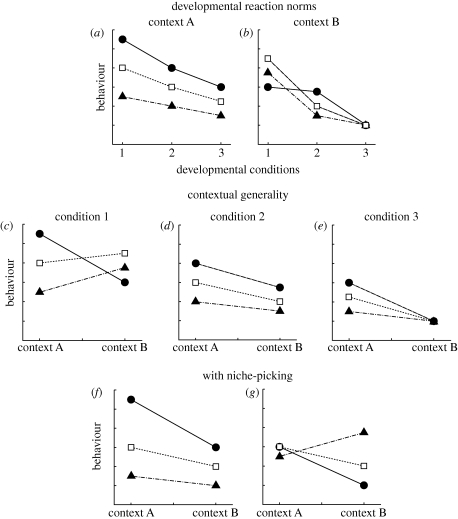Figure 1.
(a,b) Developmental reaction norms and (c–g) contextual generality diagrams for three genotypes (I = filled circles, II = open squares, III = filled triangles). Developmental reaction norms (a,b) show the behaviour expressed at one age in context A and in context B, respectively, if individuals with these genotypes had been exposed to conditions 1, 2 or 3 before their behaviour was measured. Contextual generality diagrams (c–e) indicate the relationship between standardized scores for the behaviour expressed in context A and in context B at one age for animals who had been exposed to conditions 1, 2 or 3, respectively, before their behaviour was later measured in both contexts. Niche-picking at a given age can encourage high contextual generality at a later age (figure 1f: genotype I developed in condition 1, genotype II in condition 2 and genotype III in condition 3) or low contextual generality at a later age (figure 1g: genotype I developed in condition 3, genotype II in condition 2 and genotype III in condition 1), depending on the conditions each genotype chose for development.

